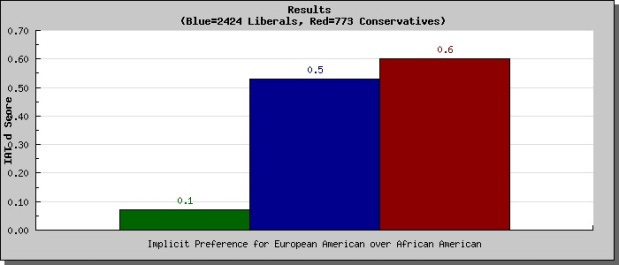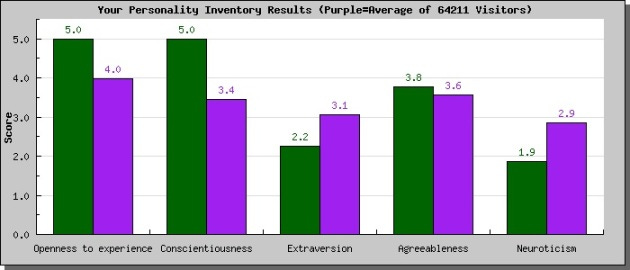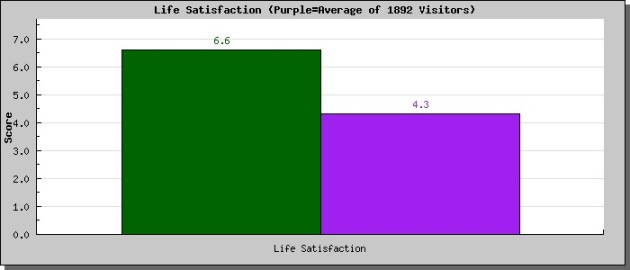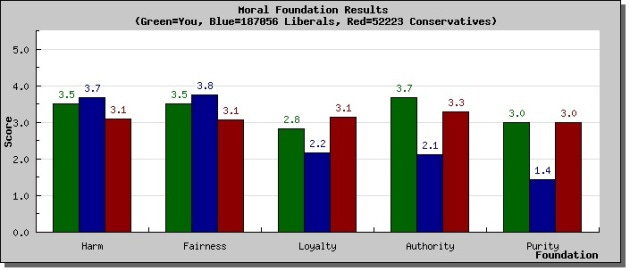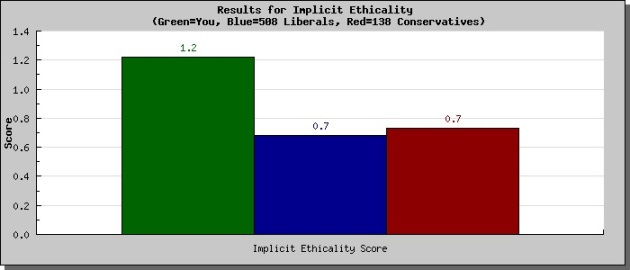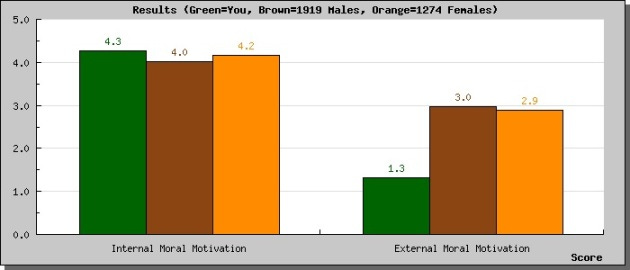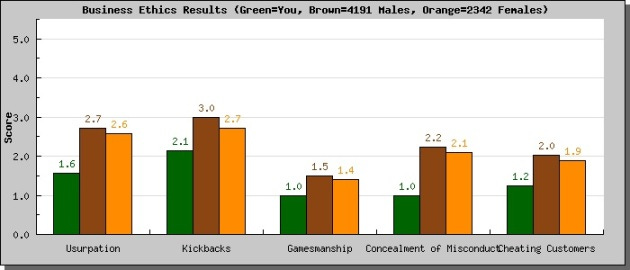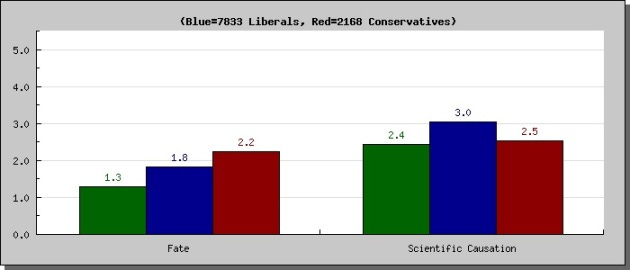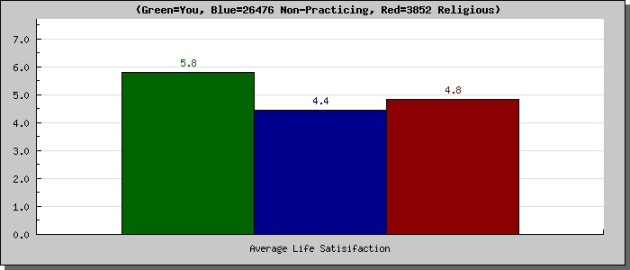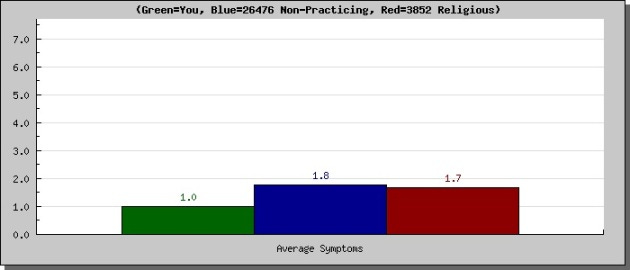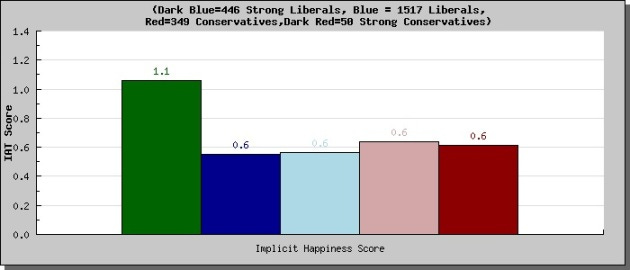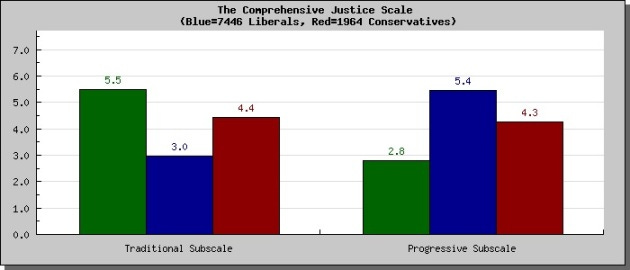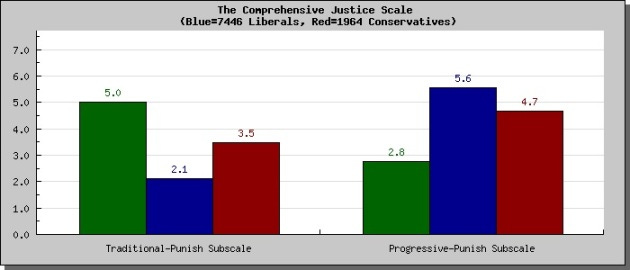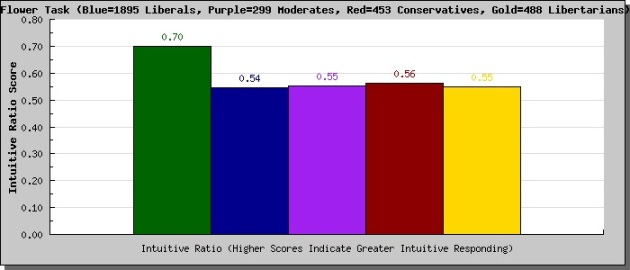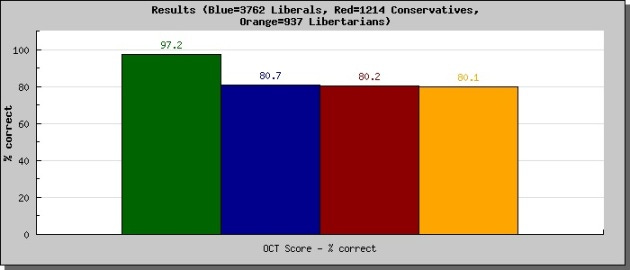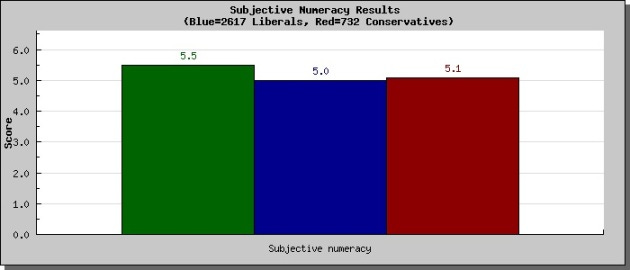If my background and credentials matter to you, I present them in the following sections:
Personal and Career Highlights
Socioeconomic Background and Character
Intelligence, Temperament, and Beliefs
A Word to Leftists and Doctrinaire Libertarians
My Moral Profile
PERSONAL AND CAREER HIGHLIGHTS
Birth and Upbringing
I was born before Pearl Harbor, but was not old enough to remember it or World War II. (Japan formally surrendered two days before my first day of kindergarten.) I was raised in two small, adjoining cities in the flat, eastern part of Michigan’s lower peninsula. (But not in the Detroit metro area, as we hastened to add when asked “What part of Michigan?”.) I am not a son of privilege, by any means (see “Socioeconomic Background and Character”).
Academics
I graduated from Big-Ten U in the early 1960s with a B.A. in Economics. Having been accepted for graduate study in economics at several top schools, including Chicago, M.I.T., and some Ivy League schools, I chose M.I.T. and soon regretted the choice: gray, rainy Cambridge and robotic mathematical approach to economics made for a depressing combination. I returned to Big-Ten U to finish the academic year, then quit to join the (somewhat) “real world” and earn some money.
First and Lasting Employment
A former professor encouraged me to join a government-funded think-tank in Northern Virginia. I worked there for 30 of my 34 years of post-collegiate, full-time employment.
Marriage and Family
I met my first love at the think-tank and married her 58 years ago. Our happy union blessed us with two grown children — whose lives validate the love (sometimes tough) and support we gave them — and twelve bright, loving, and engaging grandchildren.
Early and Mid-Career
After four years as an analyst at the think-tank, I went to the Pentagon as a “whiz kid” for two years, at the height of the Vietnam War. Another regrettable choice. I returned to the think-tank and stayed seven more years, advancing from analyst to project director and program director (i.e., manager of several project directors).
Escape from the D.C. Area
The futility of analytical work (see “Beliefs”) led to the purchase of a small publishing company (weekly paper and free shopping guide) in a village in western New York State. I worked like a dog for three years, and brought the habit back to the think-tank.
Return
When asked why I returned, I replied “Give a person an opportunity to feed at the public trough and that person will take the opportunity.” Incentives work! Another incentive was the opportunity to criticize analysis (instead of doing it) as an in-house reviewer of technical reports.
Home Stretch
I stayed at the think-tank another 18 years. After three years of reviewing reports, I established and ran the think-tank’s publications department, combining the theretofore editorial, graphics, and printing operations. A year later I was promoted to chief financial and administrative officer, with a portfolio consisting of accounting, computer operations, contracting, facility planning and operations, financial management, human resources (a.k.a. personnel), library and technical information services, physical and information security, programming services, and publications. I became deeply involved in legal matters, including the spin-off of the think-tank from its parent company, the resolution of affirmative-action claims, and complex contract and lease negotiations. I contrived retirement at age 56.
Career summary: broken-field running
Merriam-Webster defines broken-field running as
characterized by or making quick changes in direction to avoid widely scattered tacklers.
The term is also a metaphor for course changes that avert bad outcomes — in investing, politics, and life in general. Here’s my version of it:
- Excel in undergraduate school and gain acceptance to several prestigious graduate schools.
- Regret the choice of school and drop out.
- Join a high-powered think-tank as a junior analyst, thanks to a good relationships with an undergrad professor.
- Jump ahead of peers and become a project director.
- Complain about the group director (who is later relieved of duty) and move to another group.
- Regret the move and leave the think-tank for a prestigious assignment in the Pentagon.
- Regret going to the Pentagon and return to the think tank.
- Jump ahead of peers and become a program director (manager of project directors). Complain about the group director (who is later relieved of his duties) and get reassigned to direct another program.
- Tire of the D.C. rat race and buy a small publishing operation in a rural village.
- Return to the think-tank to make possible a comfortable retirement (and to escape the rural village’s harsh winters). Negotiate for and get the position sought but denied in the second tour at the think-tank.
- Move up to the front office, then move of it (to stay out of the spotlight) when the think-tank is taken over by new management.
- Parlay publishing experience into creation and management of a publications department. Parlay that experience into selection as vice president for finance and administration.
- Put up with an inept CEO for several years, then report his ethics violation to the board, anticipating retaliation against me.
- Wait patiently (more than a year) for the retaliatory move.
- Seize on the retaliation (a reduction of responsibility) to resign with continued enrollment in the company’s health-insurance program and generous severance pay (new benefits concocted by yours truly).
- Retire at age 56 with a big smile on my face.
Post-retirement
Itching for intellectual stimulation, I joined a privately funded think-tank as managing editor of an economics journal — not for the meager wage but for the stimulation of working with intelligent, intellectually honest contributors and colleagues. I quit after 18 months, when this part-time job became too consuming.
Last Stops
To be near wife’s parents in their late years, we moved from cold-rainy-hot-humid-hazy-cloudy Northern Virginia to hot, sunny Austin, whose mainly left-wing denizens irritated me with their political posturing and self-centered driving habits. (I was in Austin, but not of Austin.) After a downsizing that took five months to accomplish, we returned to Virginia (not the unbearable D.C. area) to be near our son and (most) of our grandchildren. It is good to be back in the land of tall trees and ample rain.
Memoir
See “You Can’t Go Home Again“.
SOCIOECONOMIC BACKGROUND AND CHARACTER
In my lifetime I have been related to, known, befriended, and worked with a broad cross-section of humanity. I have seen poverty and squalor, conversed with semi-literates and near-idiots, heard the rantings and taunts of bigots and bullies, known lazy louts and no-account dreamers, and admired hard workers with few skills and little learning who were proud of their meager possessions because they had earned them.
Both of my parents came from poor families — poor by today’s standards, at least. But by dint of hard work, there was always food on the table, though no one in those days took or expected handouts from government.
My parents’ outlook on life reflected the small-town values of the places in which they were raised. Through a grandmother to whom I was close, I got a good taste of how she, and my parents, had lived. I also came to know the advantages of living in villages, towns, and small cities: physical security and the kind of serenity that is almost impossible to find, for more than a few hours at a time, in the large cities and vast metropolitan areas that now dominate the human landscape of America.
If my father ever earned as much as a median income, it would come as a surprise to me. Our houses, neighborhoods, and family friends were what is known as working-class. If there were twinges of envy for the rich and famous, they were balanced with admiration for their skills and accomplishments. These children of the Great Depression — my parents and their siblings and friends — betrayed no feelings of grievance toward those who had more of life’s possessions. They were rightly proud of what they had earned and accumulated, and did not feel entitled to more than that because of their “bad luck” or lack of “privilege”.
In my own life, my jobs have ranged from busing tables to serving as a corporate officer. I have spent time in the company of high-ranking government officials, high-priced and expert lawyers, brilliant scientists and academicians, and talented musicians and artisans.
In short, I have walked many streets of life and seen many facets of the human condition. I have been spared much; my personal history excludes the direct effects of war, disaster, and privation. And I have been content to settle for relative obscurity and comfort rather than fame and fortune, even though I might have attained them had I chosen to strive for them.
On the whole, what I have seen, known, and done amounts to a large sample of the human experience. I am not trapped in the upper-middle-class “bubble” defined in Charles Murray’s Coming Apart: The State of White America, 1960–2010.
My personality is more aloof than openly empathic (see “Temperament”). Why, I cannot say. I do know that aloofness can be an avoidance mechanism for persons who are too easily overwhelmed by emotion. And I do have an emotional side that I usually avoid exposing to others. Let me just say that my ability to observe the human condition is not dulled by automatic empathy of the kind that I have seen so often in persons whose political views are based on nothing more than raw emotion. Nor am I animated by prolonged adolescent rebellion, guilt, or an inability to advance beyond collegiate leftism. I am self-aware and self-critical to a fault.
Finally, I am strongly inclined toward justice. And I mean justice, not “fairness”, which is an excuse for leveling. True justice consists of two things, and only two things: the enforcement of voluntary, mutual obligations, and the punishment of wrongdoing.
What is the point of these recollections and glimpses of my character? It is to say that my upbringing, experiences, and personality give me an advantage when it comes to understanding the human condition and its ills. This blog — in its very small way — is a place of refuge from uninformed emotion, prolonged adolescent rebellion, guilt, and a refusal (or inability) to change one’s political views for whatever reason — whether it is obduracy, willful ignorance, simple stupidity, or an inability to admit error (even to oneself).
INTELLIGENCE, TEMPERAMENT, AND BELIEFS
A man who is not a Liberal at sixteen has no heart; a man who is not a Conservative at sixty has no head. — attributed to Benjamin Disraeli
Intelligence and Its Application
My Graduate Record Examinations scores: verbal aptitude, 96th percentile; quantitative aptitude, 99th percentile; advanced test in economics, 99th percentile. The combined verbal and quantitative scores qualify me for membership (which I do not seek) in the Triple-Nine Society, whose members “have tested at or above the 99.9th percentile on at least one of several standardized adult intelligence tests”. But I am much older now — four times the age I was when I took the GREs — so I do not claim to be “brilliant”. On the other hand, I know a lot more now than I did then, which must count for something.
My intelligence was recognized at an early age, but its use was not much stimulated by my parents or the K-12 schools I attended. Only when I went to college was I “stretched”, and then the stretching came mostly at my initiative (unassigned reading and long, solitary sessions working through economic theory). The stretching — which was episodic during my working career — continues to this day, in the form of blogging on subjects that require research, careful analysis, and self-criticism of what I have produced. Self-criticism is central to my personality (see next) and leaves me open to new ideas (see next after that).
Temperament
The Myers-Briggs Type Indicator (MBTI) is in ill repute, but I have always found it to be reliable, especially in my own case. I am an INTJ, which is I(ntroverted), (i)N(tuitive), T(hinking), J(udging):
For INTJs the dominant force in their lives is their attention to the inner world of possibilities, symbols, abstractions, images, and thoughts. Insight in conjunction with logical analysis is the essence of their approach to the world; they think systemically. Ideas are the substance of life for INTJs and they have a driving need to understand, to know, and to demonstrate competence in their areas of interest. INTJs inherently trust their insights, and with their task-orientation will work intensely to make their visions into realities. (Source: “The Sixteen Types at a Glance“.)
For more revelations about my temperament, see this, this, this, and this.
Beliefs
I have moved great distances with respect to political philosophy and theology.
I was apolitical until I went to college. There, under the tutelage of economists of the Keynesian persuasion, I became convinced that government could and should intervene in economic affairs. My pro-interventionism spread to social affairs in my early post-college years, as I joined the “intellectuals” of the time in their support for the Civil Rights Act and the Great Society, which was about social engineering as much as anything.
The urban riots that followed the murder of Martin Luther King Jr. opened my eyes to the futility of LBJ’s social tinkering. I saw at once that plowing vast sums into a “war” on black poverty would be rewarded with a lack of progress, sullen resentment, and generations of dependency on big brother in Washington. (Regarding my racial views, see the first entry under “My Moral Profile”.)
At about the same time, my eyes were opened fully to the essential incompetence of government by LBJ’s inept handling of the war in Vietnam. (Gradualism, phooey — either fight to win or get out.)
However, it was not momentous events but a bit of seemingly irrelevant analysis that administered the coup de grâce to my naïve “liberalism”. It happened in the early 1970s, when my boss asked me to concoct grand measures of effectiveness for the Navy (i.e., summary measures of antisubmarine warfare capabilities, of tactical strike capabilities, and so on). I struggled with the problem, and made a good-faith effort to provide the measures. But in the end I had to report to my boss that he had given me “mission impossible”. Why? Because, no summary measure could capture the effects of the many factors that would determine the effectiveness of the armed forces: the enemy, the characteristics of his forces, the timing and geographic particulars of any engagement, and so on. (See this post.)
What does that have to do with my final rejection of “liberalism” and turn toward libertarianism? When government intervenes in economic and social affairs, its interventions are based on crude “measures of effectiveness” (e.g., eliminating poverty and racial discrimination) without considering the intricacies of economic and social interactions. Governmental interventions are — and will always be — blunt instruments, the use of which will have unforeseen, unintended, and strongly negative consequences (e.g., the cycle of dependency on welfare, the inhibition of growth-producing capital investments through taxation and regulation). I then began to doubt the wisdom of having any more government than is necessary to protect me and my fellow Americans from foreign and domestic predators. My later experiences in the private sector and as a government contractor confirmed my view that professors, politicians, and bureaucrats who presume to interfere in the workings of the economy are naïve, power-hungry, or (usually) both.
But there is more to my journey into political philosophy. I began to think seriously about liberty and libertarianism in the 1990s. Eventually, I began to question doctrinaire libertarianism (pro-abortion, pro-same-sex “marriage”, etc.) which seems to have no room in it for the maintenance of social norms that bind civil society and make it possible for people to live in actual liberty: to coexist willingly and peacefully, and to engage in beneficially cooperative behavior. And so, I have become what I call a Burkean libertarian.
The development of my theological views, which I will not trace in detail, has paralleled the development of my political philosophy. My collegiate atheism gradually turned to agnosticism as I came to understand the scientific bankruptcy of atheism. There is not a great gap between agnosticism and deism, and about fifteen years ago I made the small jump across that gap.
A WORD TO LEFTISTS AND DOCTRINAIRE LIBERTARIANS …
… who may be offended by many of the posts at this blog.
I have noticed that a leftist will accuse you of “hate” just for saying something contrary to the left-wing orthodoxy of the day. If you disagree with what I have to say here, but prefer to spew invective instead of offering a reasoned response, don’t bother to submit a comment — at least not until your rage has passed or your medication has taken effect.
The same goes for jejune libertarians, of all ages, whose narrow rationalism often materializes in rank offensiveness and a tendency toward naïve absolutism.
Having said that, I acknowledge that I sometimes adopt a biting or dismissive tone. (See, for example, the fourteen words that follow the em-dash two paragraphs above.) If you will read my blog carefully, however, you will find that my views are grounded in facts and logic. Where you disagree with or question something that I say in a particular post, search the index of posts for more on the same subject.
If you will bother to read very much of this blog and its predecessors (here and here), you will find that I am pro-peace, pro-prosperity, and pro-liberty — positions that leftists and certain libertarians like to claim as theirs, exclusively. Unlike most leftists and more than a few self-styled libertarians, I have seen enough of this world and its ways to know that peace, prosperity, and liberty are achieved when government carries a big stick abroad and treads softly at home (except when it comes to criminals and traitors). Most leftists and many self-styled libertarians, by contrast, engage in “magical thinking”, according to which peace, prosperity, and liberty can be had simply by invoking the words and attaching them to policies that, time and again, have led to war, slow economic growth, and loss of liberty.
MY MORAL PROFILE
Racial Views
I was unaware of the Implicit Association Test (IAT) until a few years ago, when I took a test at YourMorals.Org that purported to measure my implicit racial preferences. I’ll say more about that after discussing IAT, which has been exposed as junk. That’s what John. J. Ray calls it:
Psychologists are well aware that people often do not say what they really think. It is therefore something of a holy grail among them to find ways that WILL detect what people really think. A very popular example of that is the Implicit Associations test (IAT). It supposedly measures racist thoughts whether you are aware of them or not. It sometimes shows people who think they are anti-racist to be in fact secretly racist.
I dismissed it as a heap of junk long ago (here and here) but it has remained very popular and is widely accepted as revealing truth. I am therefore pleased that a very long and thorough article has just appeared which comes to the same conclusion that I did. [“Psychology’s Favorite Tool for Measuring Racism Isn’t Up to the Job“, Political Correctness Watch, September 6, 2017]
The article in question (which has the same title as Ray’s post) is by Jesse Singal. It appeared at Science of Us on January 11, 2017. Here are some excerpts:
Perhaps no new concept from the world of academic psychology has taken hold of the public imagination more quickly and profoundly in the 21st century than implicit bias — that is, forms of bias which operate beyond the conscious awareness of individuals. That’s in large part due to the blockbuster success of the so-called implicit association test, which purports to offer a quick, easy way to measure how implicitly biased individual people are….
Since the IAT was first introduced almost 20 years ago, its architects, as well as the countless researchers and commentators who have enthusiastically embraced it, have offered it as a way to reveal to test-takers what amounts to a deep, dark secret about who they are: They may not feel racist, but in fact, the test shows that in a variety of intergroup settings, they will act racist….
[The] co-creators are Mahzarin Banaji, currently the chair of Harvard University’s psychology department, and Anthony Greenwald, a highly regarded social psychology researcher at the University of Washington. The duo introduced the test to the world at a 1998 press conference in Seattle — the accompanying press release noted that they had collected data suggesting that 90–95 percent of Americans harbored the “roots of unconscious prejudice.” The public immediately took notice: Since then, the IAT has been mostly treated as a revolutionary, revelatory piece of technology, garnering overwhelmingly positive media coverage….
Maybe the biggest driver of the IAT’s popularity and visibility, though, is the fact that anyone can take the test on the Project Implicit website, which launched shortly after the test was unveiled and which is hosted by Harvard University. The test’s architects reported that, by October 2015, more than 17 million individual test sessions had been completed on the website. As will become clear, learning one’s IAT results is, for many people, a very big deal that changes how they view themselves and their place in the world.
Given all this excitement, it might feel safe to assume that the IAT really does measure people’s propensity to commit real-world acts of implicit bias against marginalized groups, and that it does so in a dependable, clearly understood way….
Unfortunately, none of that is true. A pile of scholarly work, some of it published in top psychology journals and most of it ignored by the media, suggests that the IAT falls far short of the quality-control standards normally expected of psychological instruments. The IAT, this research suggests, is a noisy, unreliable measure that correlates far too weakly with any real-world outcomes to be used to predict individuals’ behavior — even the test’s creators have now admitted as such.
How does IAT work? Singal summarizes:
You sit down at a computer where you are shown a series of images and/or words. First, you’re instructed to hit ‘i’ when you see a “good” term like pleasant, or to hit ‘e’ when you see a “bad” one like tragedy. Then, hit ‘i’ when you see a black face, and hit ‘e’ when you see a white one. Easy enough, but soon things get slightly more complex: Hit ‘i’ when you see a good word or an image of a black person, and ‘e’ when you see a bad word or an image of a white person. Then the categories flip to black/bad and white/good. As you peck away at the keyboard, the computer measures your reaction times, which it plugs into an algorithm. That algorithm, in turn, generates your score.
If you were quicker to associate good words with white faces than good words with black faces, and/or slower to associate bad words with white faces than bad words with black ones, then the test will report that you have a slight, moderate, or strong “preference for white faces over black faces,” or some similar language. You might also find you have an anti-white bias, though that is significantly less common. By the normal scoring conventions of the test, positive scores indicate bias against the out-group, while negative ones indicate bias against the in-group.
The rough idea is that, as humans, we have an easier time connecting concepts that are already tightly linked in our brains, and a tougher time connecting concepts that aren’t. The longer it takes to connect “black” and “good” relative to “white” and “good,” the thinking goes, the more your unconscious biases favor white people over black people.
Singal continues (at great length) to pile up the mountain of evidence against IAT, and to caution against reading anything into the results it yields.
Having become aware of the the debunking of IAT, I went to the website of Project Implicit. I was surprised to learn that I could not only find out whether I’m a closet racist but also whether I prefer dark or light skin tones, Asians or non-Asians, Trump or a previous president, and several other things or their opposites. I chose to discover my true feelings about Trump vs. a previous president, and was faced with a choice between Trump and Clinton.
What was the result of my several minutes of tapping “e” and “i” on the keyboard of my PC? This:
Your data suggest a moderate automatic preference for Bill Clinton over Donald Trump.
Balderdash! Though Trump is obviously not of better character than Clinton, he’s obviously not of worse character. And insofar as policy goes, the difference between Trump and Clinton is somewhat like the difference between a non-silent Calvin Coolidge and an FDR without the patriotism. (With apologies to the memory of Coolidge, my favorite president.)
Now, what did IAT say about my racism, or lack thereof? For years I proudly posted these results:
The study you just completed is an Implicit Association Test (IAT) that compares the strength of automatic mental associations. In this version of the IAT, we investigated positive and negative associations with the categories of “African Americans” and “European Americans”.
The idea behind the IAT is that concepts with very closely related (vs. unrelated) mental representations are more easily and quickly responded to as a single unit. For example, if “European American” and “good” are strongly associated in one’s mind, it should be relatively easy to respond quickly to this pairing by pressing the “E” or “I” key. If “European American” and “good” are NOT strongly associated, it should be more difficult to respond quickly to this pairing. By comparing reaction times on this test, the IAT gives a relative measure of how strongly associated the two categories (European Americans, African Americans) are to mental representations of “good” and “bad”. Each participant receives a single score, and your score appears below.
Your score on the IAT was 0.07.
Positive scores indicate a greater implicit preference for European Americans relative to African Americans, and negative scores indicate an implicit preference for African Americans relative to European Americans.
Your score appears in the graph below in green. The score of the average Liberal visitor to this site is shown in blue and the average Conservative visitor’s score is shown in red.
It should be noted that my slightly positive score probably was influenced by the order in which choices were presented to me. Initially, pleasant concepts were associated with photos of European-Americans. I became used to that association, and so found that it affected my reaction time when I was faced with pairings of pleasant concepts and photos of African-Americans. The bottom line: My slight preference for European-Americans probably is an artifact of test design.
In other words, I believed that my very low score, despite the test set-up, “proved” that I am not a racist. But thanks (or no thanks) to John Ray and Jesse Singal, I must conclude, sadly, that I have no “official” proof of my non-racism.
I suspect that I am not a racist. I don’t despise blacks as a group, nor do I believe that they should have fewer rights and privileges than whites. (Neither do I believe that they should have more rights and privileges than whites or persons of Asian or Ashkenazi Jewish descent — but they certainly do when it comes to college admissions, hiring, and firing.) It isn’t racist to understand that race isn’t a social construct (except in a meaningless way) and that there are general differences between races (see many of the posts listed here). That’s just a matter of facing facts, not ducking them, as leftists are wont to do.
What have I learned from the IAT? I must have very good reflexes. A person who processes information rapidly and then almost instantly translates it into a physical response should be able to “beat” the IAT. And that’s probably what I did in the Trump vs. Clinton test, if not in the racism test. I’m a fast typist and very quick at catching dropped items before they hit the floor. (My IQ, or what’s left of it, isn’t bad either; go here and scroll down to the section headed “Intelligence, Temperament, and Beliefs”.)
Perhaps the IAT for racism could be used to screen candidates for fighter-pilot training. Only “non-racists” would be admitted. Anyone who isn’t quick enough to avoid the “racist” label isn’t quick enough to win a dogfight.
Fair and balanced. That’s me.
Temperament
I have already said that I am an INTJ, and an especially strong I, T, and J. Here are my latest scores (02/16/17) on the Keirsey Temperament Sorter (KTS), which is similar to the Myers-Briggs Type Indicator (MBTI). The descriptive excerpts are from David Keirsey and Marilyn Bates’s Please Understand Me.
EXTRAVERSION 0 – INTROVERSION 10
The person who chooses people as a source of energy probably prefers extraversion, while the person who prefers solitude to recover energy may tend toward introversion.
SENSATION 8 – INTUITION 12
The person who has a natural preference for sensation probably describes himself first as practical, while the person who has a natural preference for intuition probably chooses to describe himself as innovative.
THINKING 20 – FEELING 0
Persons who choose the impersonal basis of choice are called the thinking types by Jung. Persons who choose the personal basis are called the feeling types…. The more extreme feeling types are a bit put off by rule-governed choice, regarding the act of being impersonal as almost inhuman. The more dedicated thinking types, on the other hand, sometimes look upon the emotion-laden decisions and choices as muddle-headed.
JUDGING 19 – PERCEIVING 1
Persons who choose closure over open options are likely to be the judging types. Persons preferring to keep things open and fluid are probably the perceiving types. The J is apt to report a sense of urgency until he has made a pending decision, and then he can be at rest once the decision has been made. The F person, in contrast, is more apt to experience resistance to making a decision, wishing that more data could be accumulated as the basis for the decision. As a result, when a P person makes a decision, he may have a feeling of uneasiness and restlessness, while the J person, in the same situation, may have a feeling of ease and satisfaction.
Js tend to establish deadlines and take them seriously, expecting others to do the same. Ps may tend more to look upon deadlines as mere alarm clocks which buzz at a given time, easily turned off or ignored while one catch an extra forty winks, almost as if the deadline were used more as a signal to start than to complete a project.
* * *
I have taken many of the other tests that are offered at YourMorals.Org. What follows is a selection of results from those tests that are especially revealing of my beliefs and personality.
The Big 5 Personality Inventory and Life Satisfaction
I first took the “Big 5” personality test on 05/28/2009, with this result (details here):
My scores are in green; the average scores of all other test-takers are in purple. The five traits are defined as follows:
1. Openness to experience: High scorers are described as “Open to new experiences. You have broad interests and are very imaginative.” Low scorers are described as “Down-to-earth, practical, traditional, and pretty much set in your ways.” This is the sub-scale that shows the strongest relationship to politics: liberals generally score high on this trait; they like change and variety, sometimes just for the sake of change and variety. Conservatives generally score lower on this trait. (Just think about the kinds of foods likely to be served at very liberal or very conservative social events.)
2. Conscientiousness: High scorers are described as “conscientious and well organized. They have high standards and always strive to achieve their goals. They sometimes seem uptight. Low scorers are easy going, not very well organized and sometimes rather careless. They prefer not to make plans if they can help it.”
3. Extraversion: High scorers are described as “Extraverted, outgoing, active, and high-spirited. You prefer to be around people most of the time.” Low scorers are described as “Introverted, reserved, and serious. You prefer to be alone or with a few close friends.” Extraverts are, on average, happier than introverts.
4. Agreeableness: High scorers are described as “Compassionate, good-natured, and eager to cooperate and avoid conflict.” Low scorers are described as “Hardheaded, skeptical, proud, and competitive. You tend to express your anger directly.”
5. Neuroticism: High scorers are described as “Sensitive, emotional, and prone to experience feelings that are upsetting.” Low scorers are described as “Secure, hardy, and generally relaxed even under stressful conditions.”
A strong sense of security is consistent with this result (from a test taken on 10/02/14):
Moral Foundations Questionnaire
The scale you completed was the “Moral Foundations Questionnaire,” developed by Jesse Graham and Jonathan Haidt at the University of Virginia.
The scale is a measure of your reliance on and endorsement of five psychological foundations of morality that seem to be found across cultures. Each of the two parts of the scale contained three questions related to each foundation: 1) harm/care, 2) fairness/reciprocity (including issues of rights), 3) ingroup/loyalty, 4) authority/respect, and 5) purity/sanctity.
The idea behind the scale is that human morality is the result of biological and cultural evolutionary processes that made human beings very sensitive to many different (and often competing) issues. Some of these issues are about treating other individuals well (the first two foundations – harm and fairness). Other issues are about how to be a good member of a group or supporter of social order and tradition (the last three foundations). Haidt and Graham have found that political liberals generally place a higher value on the first two foundations; they are very concerned about issues of harm and fairness (including issues of inequality and exploitation). Political conservatives care about harm and fairness too, but they generally score slightly lower on those scale items. The big difference between liberals and conservatives seems to be that conservatives score slightly higher on the ingroup/loyalty foundation, and much higher on the authority/respect and purity/sanctity foundations.
This difference seems to explain many of the most contentious issues in the culture war. For example, liberals support legalizing gay marriage (to be fair and compassionate), whereas many conservatives are reluctant to change the nature of marriage and the family, basic building blocks of society. Conservatives are more likely to favor practices that increase order and respect (e.g., spanking, mandatory pledge of allegiance), whereas liberals often oppose these practices as being violent or coercive.
In the graph below, your scores on each foundation are shown in green (the 1st bar in each set of 3 bars). The scores of all liberals who have taken it on our site are shown in blue (the 2nd bar), and the scores of all conservatives are shown in red (3rd bar). Scores run from 0 (the lowest possible score, you completely reject that foundation) to 5 (the highest possible score, you very strongly endorse that foundation and build much of your morality on top of it).
Implicit Ethicality
The study you just completed was an implicit measure of how much you associate yourself with ethicality.
The idea behind the IAT is that concepts with very closely related (vs. unrelated) mental representations are more easily and quickly responded to as a single unit. For example, if “me” and “sharing” are strongly associated in one’s mind, it should be relatively easy to respond quickly to this pairing by pressing the “E” or “I” key. If “me” and “sharing” are NOT strongly associated, it should be more difficult to respond quickly to this pairing. By comparing reaction times on this test, the IAT gives a relative measure of how strongly associated the two categories (Me, Not Me) are to mental representations of “ethical” and “unethical”. Each participant receives a single score, and your score appears below.
Note that there is a great deal of controversy as to the exact meaning of what these reaction time associations actually mean, so please take your results with a grain of salt. While a great deal of previous research has validated the use of such procedures to detect associations of group level bias across groups, the use of IAT procedures to measure individual ethicality is still in development and all of these procedures have been validated probibalistically, at the group level, rather than being validated as being absolutely diagnostic for individuals. That being said, many (though not all) people have found validity in their implicit scores and have found there to be some real psychological process that tracks implicit associations.
Your score on the IAT was 1.218.
Positive scores indicate that ethical associations with the self-concept are stronger than negative associations, and a negative score indicates the opposite.
Your score appears in the graph below in green. The score of the average Liberal visitor to this site is shown in blue and the average Conservative visitor’s score is shown in red.
Moral Motivation Scale
The scale is a measure of the degree to which people are motivated to act morally by internal and external factors. An example of an internal motivational factor is the drive to achieve (or maintain) one’s happiness through acting morally. An example of an external motivational factor is the drive to act morally in order to improve (or maintain) relationships.
The idea behind the scale is that people vary on the degree to which they experience internal and external moral motivations. Though we suspect that some people are more internally (rather than externally) motivated to act morally, we suspect that everyone is motivated to act morally by internal and external factors. We expect that internal vs. external motivation might relate to who gives to charity in a more public vs. a more private way or who is more likely to be honest when in a group setting vs. a private setting. As well, some national surveys have shown that women make harsher moral judgments than men, and we expect that that might reflect higher moral motivations.
Your Score (in green):
Business Ethics Questionnaire
The scale is a measure of statements describing behaviors relevant to five categories of business ethics: (a) usurpation of company resources (e.g. using company time/products), (b) corporate gamesmanship (politics), (c) cheating customers, (d) concealment of misconduct, and (e) offering kickbacks/gifts.
The idea behind the scale is that there is very little systematic research on everyday ethical issues in business. This measure has been tested cross-culturally to show relevance for participants from Hong Kong, mainland China and Taiwan. Specifically, a values structure highlighting the importance of self-transcendence values correlates with more ethical behavioral orientations, while a values structure highlighting the importance of the self-enhancement dimension of values correlates with less ethical behavioral orientations. Further, we are interested in what behaviors are seen as unethical as while all individuals espouse ethicality, different types of behavior are often seen as being more or less relevant to ethics, depending on one’s culture. In previous research, women have reported being more ethical than men.
The graph below shows how often people say that they find various everyday ethical situations to be acceptable in everyday life. This business ethics questionnaire includes 5 categories: Usurpation of company resources, Offering kickbacks, Corporate gamesmanship, Concealment of misconduct, & Cheating Customers. Higher scores indicate greater acceptance of these behaviors.
Self Responses:
Marlowe-Crown Social Desirability Scale
The scale you just completed was the Marlowe-Crowne Social Desirability Scale, developed by Douglas Crowne and David Marlowe (1960). This scale measures social desirability concern, which is people’s tendency to portray themselves favorably during social interaction. Each of the 33 true-false items that you just filled out describes a behavior that is either socially acceptable but unlikely, or socially unacceptable but likely. As a result, people who receive high scores on this measure may be more likely to respond to surveys in a self-promoting fashion.
We are interested in examining how liberals and conservatives score on this scale. Although previous research has investigated how these groups can be biased when evaluating political information, little is known about the relationship between political attitudes and social desirability concern.
The graph below shows your score on this scale. The scores range from 0% to 100% and represent the proportion of answers that indicated socially desirable responding. Thus, higher scores correspond with higher degrees of socially desirable responding. Your score is shown in green (1st bar). The score of the average liberal respondent is shown in light blue and the score of the average strong liberal is shown in dark blue. The average conservative score is shown in light red and the score of the average strong conservative is shown in dark red.
Free Will and Determinism Scale
Liberals and conservatives seem to disagree in their basic understandings of the causes of human action, particularly of immoral action. Liberals are more likely to believe that social forces, poverty, childhood trauma, or mental illness can serve as valid excuses. Conservatives are more likely to reject such excuses and want to hold people accountable for their actions, including a preference for harsher punishments. At least, that is the way things play out in many disputes in the legal world. We want to see if we can look at this stereotypical difference in more detail. We want to find out WHICH kinds of free will and determinism show a correlation with politics, and with other psychological variables.
The Paulhus scale measures people’s attitudes about four constructs related to freedom vs. determinism, which we have graphed for you in the four green bars below.
The first graph shows your score on two measures of belief in determinism:
Fate: the belief that individuals cannot control their own destinies
Scientific causation: the belief that people’s actions are fully explained by a combination of biological and environmental forces
The second graph shows your score on two subscales about belief in NON-determinism, or freedom:
Randomness: the belief that some events are truly random, that chance plays a role in human affairs
Free Will: the degree to which people can truly decide upon their behaviors and are personally responsible for their outcomes.
In the graphs below, your score is shown in green (the first bar in each cluster). The scores of all people who have taken the scale on our site and who described themselves during registration as politically liberal are shown in the blue bars. The scores of people who described themselves as politically conservative are in red. Scores run from 1 (the lowest possible score, least belief in that construct) to 5 (the highest possible score).
Satisfaction with Life Scale
The scale is a measure of your general happiness level. Despite its simplicity, the scale has been found to do a good job of measuring people’s general state of “subjective well-being.” It is widely used, in many nations.
We are interested in measuring happiness on this site because many studies have found that religious people are happier than non-believers, and some have found that politically conservative people are slightly happier than are political liberals, even after controlling statistically for religiosity. A recent Gallup survey found that religiosity was associated with better mental health for Republicans, but it didn’t make a difference for Democrats. We want to investigate these complex relationships among happiness, morality, religion, and ideology.
In the graph below, your score is shown in green. The scores of all people who have taken the scale on our site and who say that they go to religious services never, or just a few times a year, are shown in blue. The scores of all people who have taken the scale on our site and who said (during registration) that they go to religious services a few times a month or more are shown in red. Scores run from 1 (the lowest possible score, least happy) to 7 (the highest possible score, most happy).
In addition, we asked you some questions on the second page about your mental health. That recent Gallup poll showed that conservatives and religious people report having better mental health when asked using a single question (“how would you rate your mental health?”). We want to see if their finding holds up using a more specific scale, so we asked you to report on a variety of symptoms related to depression and anxiety, which are the most common kinds of mental health symptoms that people report. In the graph below, your score is shown in green. High scores mean MORE mental health complaints. Scores run from 1 (the lowest possible score, no symptoms at all) to 5 (the highest possible score, people who responded “extremely” to all items). As before, the blue bar shows the score of the less religious people; the red bar shows the average score of the most religious people.
Implicit Happiness
The study you just completed included both a self-report and an implicit measure of well-being. The self-report measure of well-being was the Satisfaction With Life Scale, and the implicit measure was an Implicit Association Test (IAT) that compared the strength of automatic mental associations. In this version of the IAT, we investigated associations between the self-concept and the concepts of happiness and sadness.
The idea behind the IAT is that concepts with very closely related (vs. unrelated) mental representations are more easily and quickly responded to as a single unit. For example, if “me” and “happy” are strongly associated in one’s mind, it should be relatively easy to respond quickly to this pairing by pressing the “E” or “I” key. If “me” and “happy” are NOT strongly associated, it should be more difficult to respond quickly to this pairing. By comparing reaction times on this test, the IAT gives a relative measure of how strongly associated the two categories (Me, Not Me) are to mental representations of “happy” and “sad”. Each participant receives a single score, and your score appears below.
Your score on the IAT was 1.059.
Positive scores indicate that “happiness” associations with the self-concept are stronger (i.e., faster) than “sadness” associations, and a negative score indicates the opposite.
Your score appears in the graph below in green. The score of the average Liberal visitor to this site is shown in blue and the average Conservative visitor’s score is shown in red.
Comprehensive Justice Scale
The scale is a measure of your attitudes toward crime and punishment. Some of the items reflected a “progressive” and less punitive attitude toward criminals (for example agreeing with the statement that “punishment should be designed to rehabilitate offenders,” and being opposed to the death penalty). Other items reflected a more “traditional” attitude, including a willingness to use traditional forms of punishment, such as shaming or flogging. We grouped these two kinds of items together to give you a “progressive” and a “traditional” score in the first graph below. We call this the “comprehensive” justice scale because research on justice and punishment has usually taken either a liberal or conservative approach. We are trying to examine the broadest possible range of ideas and intuitions about what you think should happen to the offender, and the victim. Disagreements about crime and punishment have long been at the heart of the “culture war.” By linking your responses here to the information you gave us when you registered, or when you took other surveys, we hope to shed light on what kinds of people (not just liberals and conservatives) endorse what kinds of responses to crime, and why.
The graph below shows your scores (in green) on the items from the first page, compared to those of the average liberal (in blue) and the average conservative (in red) visitor to this website. The scale runs from 1 (lowest score) to 7 (highest score).
The second graph shows your results from the items on page 2, where we asked about “alternatives to prison.” This page should produce similar results to what you see from Page 1. We expect liberals to favor the more lenient and rehabilitative alternatives, and conservatives to favor the more punitive options. We are trying out various ways of asking these questions to see which format, or combination of formats, produces the best measurement of people’s attitudes.
Cultural Thought Styles
The graph below shows your percentage of intuitive pairings (in green) compared to those of the average liberal (in blue), the average moderate (in purple), the average conservative (in red), and the average libertarian (in gold) visitor to this website.
Low = formal; high = intuitive reasoning. Also, scores of zero are common. It simply means you chose all formal reasoning options.
* * *
Lest you conclude that intuitiveness precludes knowledge and sound reasoning, look at the next three results (and read this).
Test Your Knowledge
Your score on the OCT is calculated by taking into account your familiarity with the real items (e.g., Bill Clinton) and subtracting how familiar you rated the false/fake items to be (e.g., Fred Gruneberg — my next door neighbor). Also, familiarity ratings of 1 to 4 are treated the same. So if you rated your familiarity with “Bill Clinton” as 1, 2, 3, or 4 then you scored a +1 for that item. And if you rated your familiarity with “Fred Gruneberg” as 1, 2, 3, or 4 then you scored a -1 for that item. If you were unfamiliar with any real or false items, your scores for those items are 0. A perfect score would be identifying all real items and not recognizing any of the false items.
The graph below shows your score on the OCT as it compares to others who have taken this survey on our website. Scores range from 0%-100% and higher values correspond to more correct responses to the OCT. Your score is shown in green, scores of the average liberal are in blue, and scores of the average conservative are in red.
Science and Research Knowledge
The scales you completed were designed to assess your familiarity with scientific research processes and your comfort with working with numerical information. The order in which you received them was randomized.
One scale uses questions from the National Science Foundation’s (NSF) 2010 Science and Engineering Indicators, which is an effort to track public knowledge and attitudes toward science and technology trends in the U.S. and other countries. For this survey, the items pertaining to understanding statistics, how to read data charts, and conducting an experiment were used.
The other scale is the Subjective Numeracy Scale by Angela Fagerlin and colleagues, which measures individuals’ preference for numerical information. Numeracy (adapted from the term ‘literacy’) represents individuals’ ability to comprehend and use probabilities, ratios, and fractions. Traditional measures of numeracy ask people to perform mathematical operations, such as ‘If person A’s risk of getting a disease is 1% in 10 years, and person B’s risk is double that of A’s, what is B’s risk?’ However, some participants find these types of problems stressful and unpleasant, plus they are difficult to score in online studies. Subjective numeracy measures (like the scale you just took) are shown to be equally good measures of numeracy, without burdening participants.
U.S. Political Knowledge Test
The scale you completed was a General Political Knowledge scale for American politics that we developed and is based on work by Michael Delli Carpini, Scott Keeter, Milton Lodge, and Charles Taber.
The scale measures the factual knowledge people possess about politics. We used questions about three broad topics: 1) civics and what the government is and does (e.g. who has the final responsibility to decide if a law is constitutional or not?); 2) public officials or leaders (e.g. who is the current Speaker of the House?); and 3) political parties (e.g. which party is more conservative on a national scale?).
The idea behind this scale is that objective factual knowledge may be an important factor in studies about political issues and reasoning. It may be that people who are more informed about politics (whether they’re liberal or conservative) think and reason differently about moral or political issues than people who are less informed. For instance, are people who are more informed more or less likely to objectively evaluate political arguments? We suspect that, ironically, people with more political knowledge may be less objective when it comes to a number of information processes (see recommended reading below).
The graphs below show your scores (in green) compared to those of the average liberal (in blue), the average conservative (in red), and the average libertarian (in orange) visitor to this website. The first graph shows your score on the political knowledge scale in comparison to other liberals and conservatives and scores run from 0% (the lowest possible score) to 100% (the highest possible score*).


